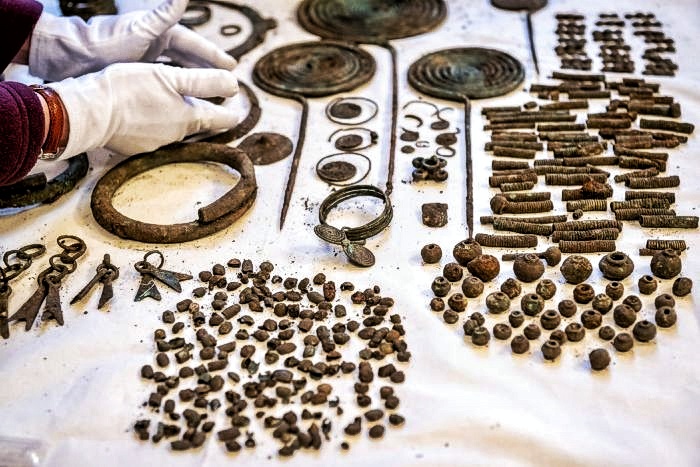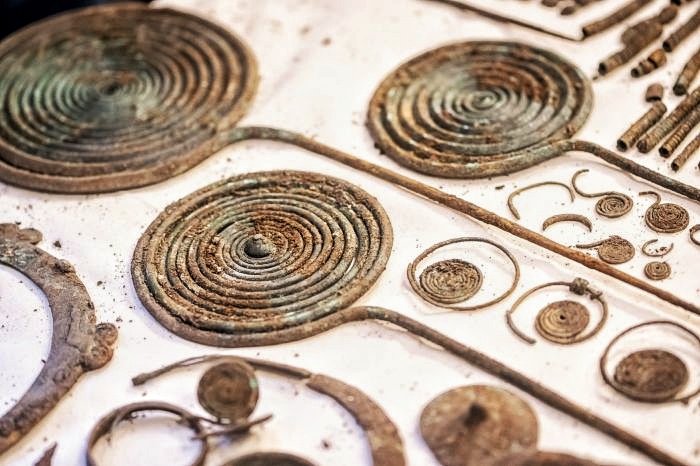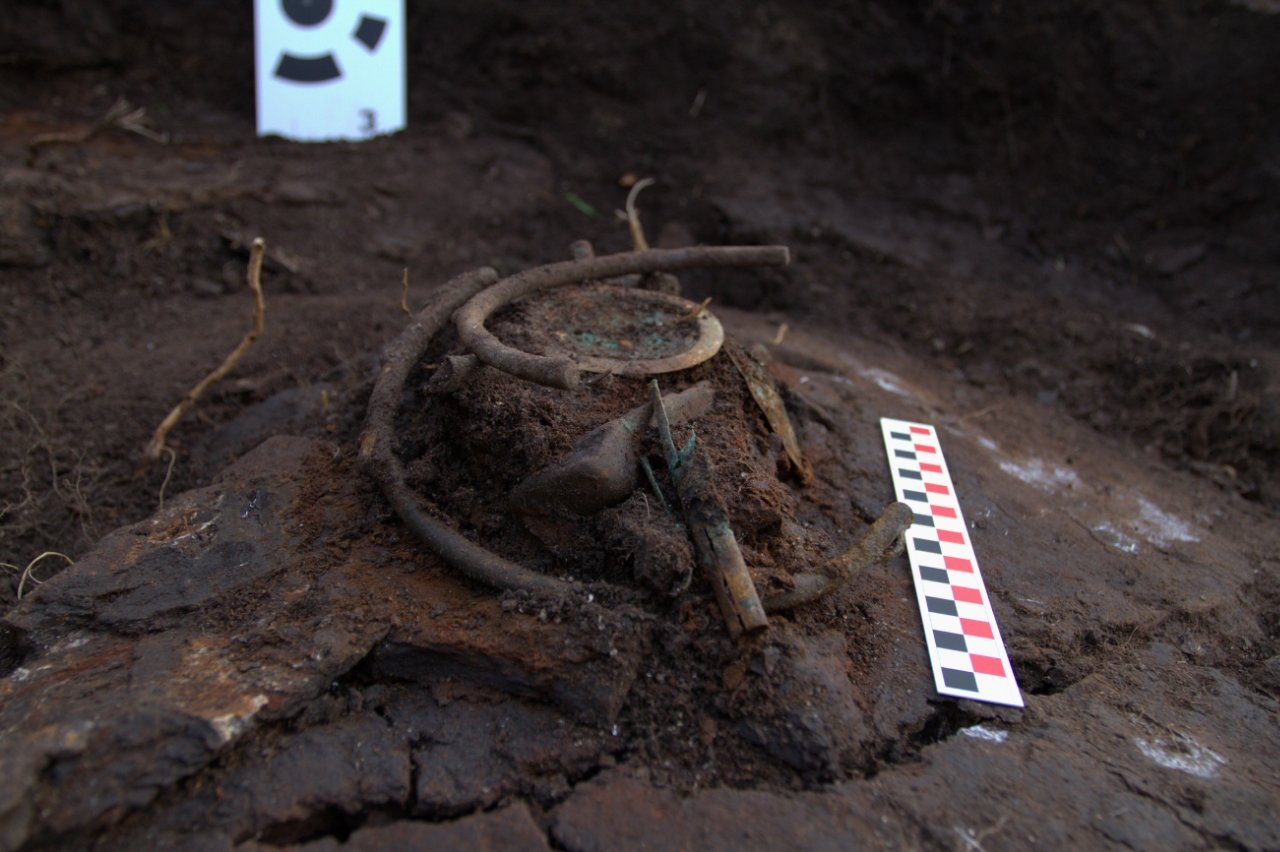Researchers in Poland were metal detecting a drained peat bog on the basis of supposition when they discovered an ancient sacrifice site holding a treasure trove of Bronze Age and early Iron Age bronze items.

The “stunning discovery” was found by the Kuyavian-Pomeranian Group of History Seekers using metal detectors in a drained peat bog turned into farmland in Poland’s Chemno area. The precise site of the finding, however, has been kept secret for security reasons.
Formal excavations were carried out by the WUOZ in Toru and a team from the Nicolaus Copernicus University’s Institute of Archeology in Toru, with assistance from the Wdecki Landscape Park.
Unearthing the peat bog treasures

Millennia before the first written record of Poland’s Chełmno district in 1065 AD, the Lusatian culture emerged and expanded in the area, marked by an increase in population density and the establishment of palisaded settlements.
Archaeologists uncovered three individual deposits at the recent excavation site, which they describe as “a spectacular treasure trove” of bronze artifacts dating back over 2,500 years to the Lusatian culture. According to a report on Archaeo News, the team recovered bronze “necklaces, bracelets, greaves, horse harnesses, and pins with spiral heads.”
The researchers said it was “uncommon” to find organic materials at such dig sites, but they also discovered “rare organic raw materials,” including fragments of fabric and rope. As well as finding bronze artifacts and organic materials, the researchers also discovered scattered human bones.

These led to the conclusion that the collection of bronze artifacts was deposited during Lusatian culture’s “ sacrificial rituals,” which were performed during the Bronze Age and early Iron Age (12th – 4th century BC).
The Lusatian culture thrived in the later Bronze Age and early Iron Age in what is today Poland, the Czech Republic, Slovakia, eastern Germany, and western Ukraine. The culture was particularly widespread in the Oder River and Vistula River basins, and it extended eastwards to the Buh River.
However, the researchers said some of the bronze items “were not indigenous to the region,” and it is thought that they came from the Scythian civilization in present-day Ukraine.

The archaeologists have attempted to reconstruct what exactly went on at this sacrificial site, and how it was used. It is suspected that around the same time that the sacrifices were made, nomads began appearing from the Pontic Steppe in central and eastern Europe. It is possible the Lusatian people performed their sacrificial rituals in an attempt to slow down the incomers, who brought with them rapid social changes.
Soldering society to the gods
For a more complete picture of how the Lusatian people interacted with their gods, consider the 2009 discovery of a Late Bronze Age necropolis in Warsaw, Poland. Excavators discovered twelve burial urns holding the ashes of at least eight deceased persons in a mass burial grave dated from 1100-900 BC.
Using metallographic, chemical, and petrographic examinations of funerary artifacts, the experts discovered that the individuals were put in the urns using bronze metalworking tools.
These tombs showed not just the era’s ritual and social practices, but also the organizational methods and high social position of the ancient Lusatian metalworkers.
With the discovery of this new sacrificial site rich with metal sacrificial offerings in a dried-up peat bog, further information on the beliefs practices, and social values of this ancient Bronze Age culture will soon be extracted. The team thinks that further study will yield a more comprehensive archaeometallurgical and symbolic background for the ancient Lusatian people who formerly lived in Poland’s Chemno area.




